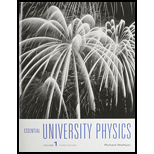
Figure 7.14 shows force vectors at different points in space for two forces. Which is conservative and which nonconservative? Explain.

FIGURE 7.14 For Thought and Discussion 1; Problem 30
To determine and explain: which is conservative and non-conservative forces with given figures.
Answer to Problem 1FTD
Figure (a) follows the conservative force system.
Figure (b) follows the non-conservative force system.
Explanation of Solution
Refer to the Figure 7.14 (a) in the question.
The magnitude of force in the force vectors at different points in space is equal. This statement gives information that it’s present in closed path.
Therefore, the given force of vectors follows the conservative force system.
Refer to the Figure 7.14 (b) in the question.
The magnitude of force vectors at different points in space is unequal and the magnitude of magnitude of force varying from place to place and point to point. Due to some external force these changes may occur. The non-conservative force definition states that due to some frictional force the force will act opposite to the motion.
Therefore, the given force of vectors follows the non-conservative force system.
Want to see more full solutions like this?
Chapter 7 Solutions
Essential University Physics (3rd Edition)
Additional Science Textbook Solutions
Microbiology: An Introduction
Introductory Chemistry (6th Edition)
Human Physiology: An Integrated Approach (8th Edition)
Campbell Biology: Concepts & Connections (9th Edition)
Applications and Investigations in Earth Science (9th Edition)
Chemistry: An Introduction to General, Organic, and Biological Chemistry (13th Edition)
- From your examination of the graph created using the data in Data Table 4 of Period, T vs √L . What would you determine is the relationship between the period of a pendulum and the length of a pendulum?arrow_forwardIn a certain bimetallic strip, the brass strip is 0.100% longer than the steel strip at a temperature of 283°C. At what temperature do the two strips have the same length? Coefficients of linear expansion for steel α = 12.0 × 10−6 K−1 and for brass α = 19.0 × 10−6 K−1 (see Table 13.2).arrow_forwardReview Conceptual Example 2 before attempting this problem. Two slits are 0.158 mm apart. A mixture of red light (wavelength = 693 nm) and yellow-green light (wavelength = 567 nm) falls on the slits. A flat observation screen is located 2.42 m away. What is the distance on the screen between the third-order red fringe and the third-order yellow-green fringe? m = 3 m = 3 m = 0 m = 3 m = 3 Fringes on observation screenarrow_forward
- A film of oil lies on wet pavement. The refractive index of the oil exceeds that of the water. The film has the minimum nonzero thickness such that it appears dark due to destructive interference when viewed in visible light with wavelength 643 nm in vacuum. Assuming that the visible spectrum extends from 380 to 750 nm, what is the longest visible wavelength (in vacuum) for which the film will appear bright due to constructive interference? Number Unitsarrow_forwardA piece of metal is placed on top of a 2.0 - kg wooden block (mass density = 562 kg/m³) piece. UseArchimedes' principle to calculate the mass (in kg) of copper if the top of the wood surface is exactly at thewater's surface?arrow_forwardA filmmaker wants to achieve an interesting visual effect by filming a scene through a converging lens with a focal length of 50.0 m. The lens is placed betwen the camera and a horse, which canters toward the camera at a constant speed of 7.9 m/s. The camera starts rolling when the horse is 36.0 m from the lens. Find the average speed of the image of the horse (a) during the first 2.0 s after the camera starts rolling and (b) during the following 2.0 s.arrow_forward
- What is the direction of the magnetic force on a NEGATIVE CHARGE that moves as shown in each of the six cases?arrow_forwardHi! I need help with these calculations for part i and part k for a physics Diffraction Lab. We used a slit width 0.4 mm to measure our pattern.arrow_forwardExamine the data and % error values in Data Table 3 where the angular displacement of the simple pendulum decreased but the mass of the pendulum bob and the length of the pendulum remained constant. Describe whether or not your data shows that the period of the pendulum depends on the angular displacement of the pendulum bob, to within a reasonable percent error.arrow_forward
 University Physics Volume 1PhysicsISBN:9781938168277Author:William Moebs, Samuel J. Ling, Jeff SannyPublisher:OpenStax - Rice University
University Physics Volume 1PhysicsISBN:9781938168277Author:William Moebs, Samuel J. Ling, Jeff SannyPublisher:OpenStax - Rice University Physics for Scientists and Engineers: Foundations...PhysicsISBN:9781133939146Author:Katz, Debora M.Publisher:Cengage Learning
Physics for Scientists and Engineers: Foundations...PhysicsISBN:9781133939146Author:Katz, Debora M.Publisher:Cengage Learning Principles of Physics: A Calculus-Based TextPhysicsISBN:9781133104261Author:Raymond A. Serway, John W. JewettPublisher:Cengage Learning
Principles of Physics: A Calculus-Based TextPhysicsISBN:9781133104261Author:Raymond A. Serway, John W. JewettPublisher:Cengage Learning Foundations of Astronomy (MindTap Course List)PhysicsISBN:9781337399920Author:Michael A. Seeds, Dana BackmanPublisher:Cengage Learning
Foundations of Astronomy (MindTap Course List)PhysicsISBN:9781337399920Author:Michael A. Seeds, Dana BackmanPublisher:Cengage Learning Stars and Galaxies (MindTap Course List)PhysicsISBN:9781337399944Author:Michael A. SeedsPublisher:Cengage Learning
Stars and Galaxies (MindTap Course List)PhysicsISBN:9781337399944Author:Michael A. SeedsPublisher:Cengage Learning





